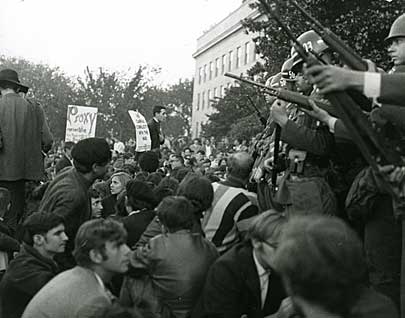The average age of an American soldier in Vietnam was 19. The majority of U.S. military deaths involved soldiers under the age of 22. Wars always have a powerful effect on a nation’s young people, but the Vietnam War was uniquely controversial for its impact on America’s youth, as President Lyndon B. Johnson chose to rapidly escalate a war that many of his top advisers considered to be unwinnable.
The following graphic shows the number of U.S. military forces in Vietnam for each year between 1961 and 1973. Use this resource to help your students trace the escalation of U.S. military involvement—and strengthen their graphical literacy in the process. This resource can also be paired with significant dates and turning points from the 1960s and early 1970s to help your students put the data in context:
- John F. Kennedy assassinated (1963)
- Operation Rolling Thunder (1965)
- The Tet Offensive (1968)
- Richard Nixon inaugurated (1969)
- Easter Offensive (1972)
This graph is part of ABC-CLIO’s World at War: Understanding Conflict and Society database, a platform developed by military historians to examine the causes and consequences of wars, rebellions, and revolutions from antiquity to the present. Click here to unlock your free preview of this database and gain access to thousands of authoritative resources including:
- More than 10,000 reference articles
- 6,400 images, 720 maps, 390 personal accounts, and 280 video and audio recordings
- CLIOview tool that allows students to make comparisons and graph statistical data related to countries during wartime, with more than 15 categories including active armed forces, land borders, religious groups and more
- Investigate activities including primary and secondary source materials to help students answer a central inquiry question




